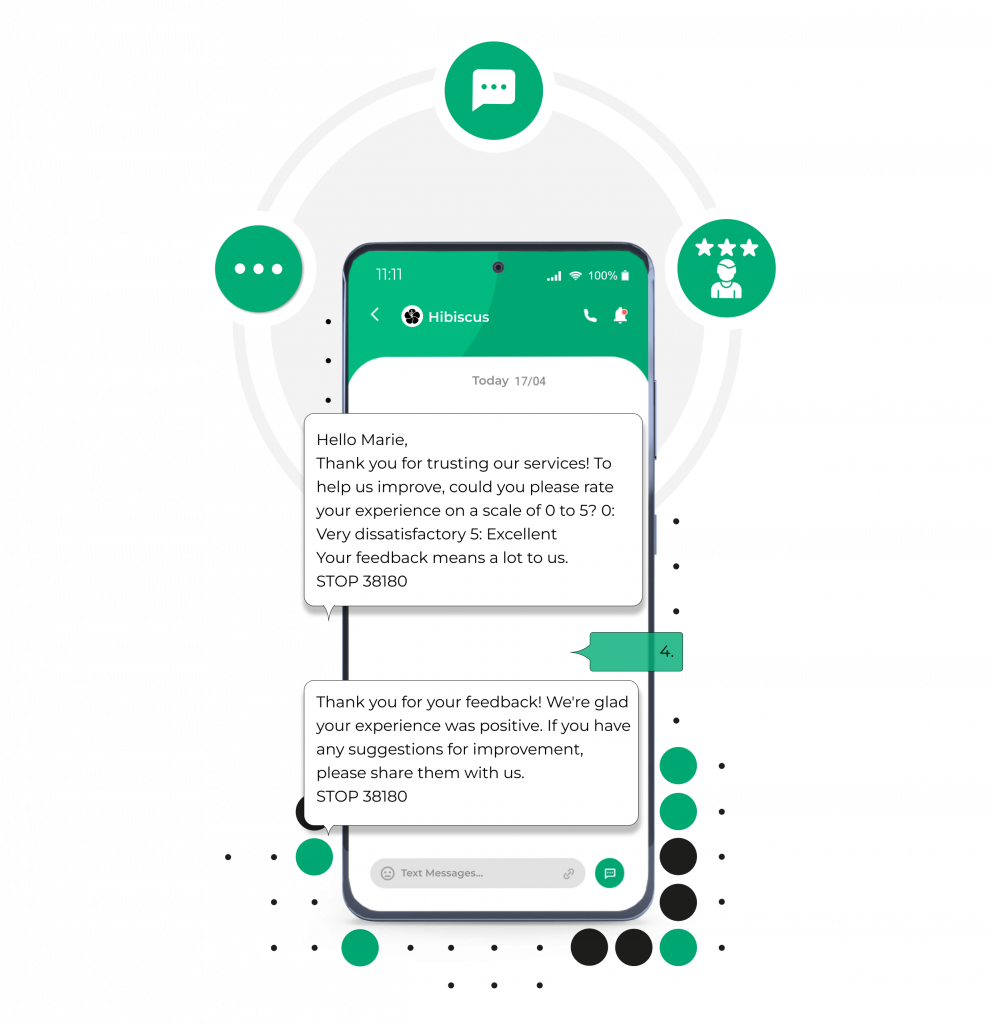Reinvent customer relations with conversational SMS



What is conversational SMS?
Conversational SMS is a two-way communication channel that enables companies to communicate with their customers via short messages. Unlike traditional SMS, this system offers recipients the opportunity to respond and engage in conversation with the brand according to pre-recorded patterns. This interactivity transforms SMS into a powerful dialogue tool, capable of significantly strengthening customer relations.






Whereas classic SMS are unidirectional and mainly used to disseminate information, conversational SMS opens the way to two-way two-way communication. This major development enables customers to ask questions, request clarification or even perform actions directly via SMS. The company can then respond in a personalized and immediate way, creating a smoother and more satisfying customer experience.
The rise of conversational SMS is part of the broader trend towards conversational marketing, which places dialogue at the heart of companies’ communication strategies. Today’s consumers expect more personal and instantaneous interaction with brands. Conversational SMS perfectly meets this expectation, first and foremost by offering universal accessibility. SMS is compatible with all cell phones. Conversational SMS also offers unrivalled speed of exchange, with most SMS messages read within minutes of receipt.
Boost your communication with conversational SMS.
Conversational SMS: a winning solution for your business
Conversational SMS enables companies to respond instantly to customer queries. This increased reactivity contributes greatly to customer satisfaction, by reducing waiting times and providing rapid solutions to any problems encountered. Customers feel listened to and valued, which reinforces their trust in the brand and improves their overall perception of the company.
The interactivity of conversational SMS opens up new opportunities for converting prospects into customers. Companies can engage in personalized conversations, responding to objections in real time. This approach direct and engaging often results in a significant increase in conversion rates and sales.
Lheautomation of processes in conversational SMS systems simplifies and optimizes the management of customer interactions, while reducing operational costs. By taking on repetitive tasks or simple requests, automation ensures a rapid and consistent response, while enabling your teams to concentrate on higher value-added missions. This approach not only improves the overall efficiency of your service, but also helps maintain a smooth, high-quality customer experience.
A successful conversational SMS strategy
Personalization is the key to success in any conversational SMS strategy. It can be interesting to adapt messages to the customer’s profile and preferences. Use the customer data at your disposal to create messages relevant and engaging. For example, include the customer’s first name, refer to previous purchases or propose offers tailored to their interests.
Speed of response is a determining factor in customer satisfaction. Set up a automation system for answers to frequently asked questions, guaranteeing immediate responsiveness. For more complex requests, make sure you have a dedicated team capable of taking over quickly. Visit combination of intelligent automation and targeted human intervention to optimize the customer experience.
Tracking and analyzing the performance of your conversational SMS campaigns is essential to continually improve your strategy. Monitor key indicators such as response rate, conversion rate, customer satisfaction and problem resolution time. Use this data to refine your messages, optimize your processes and maximize the effectiveness of your campaigns.
Frequently asked questions
Although similar in their interactive approach, conversational SMS and chatbots differ mainly in their communication channel. Conversational SMS uses the traditional SMS network, accessible to all cell phones, while chatbots are generally integrated into applications or websites. Conversational SMS thus offers greater reach and accessibility.
Absolutely. The ideal is to combine automation for simple, frequent queries with human intervention for more complex cases. This hybrid approach allows us to offer rapid responses while maintaining the quality and personalization of customer service when necessary.
Yes, conversational SMS can be perfectly RGPD-compliant, provided certain rules are followed. It’s essential to obtain customers’ explicit consent before sending them messages, to offer them the option to unsubscribe easily and to process their personal data securely and transparently.
Conversational SMS differs radically from email in its communicative approach. They enable instant, direct interaction with the customer. SMS messages are more concise and punchy, avoiding the lengthy textual developments usually associated with emails. Conversational SMS messages thus guarantee quick reading and instant comprehension of the message, whereas emails can remain unconsulted for hours or even days. They enable a direct response and facilitate real-time dialogue, unlike emails, which often involve delayed exchanges. They create a stronger sense of proximity and personalization, giving the impression of a natural, direct conversation with the company.